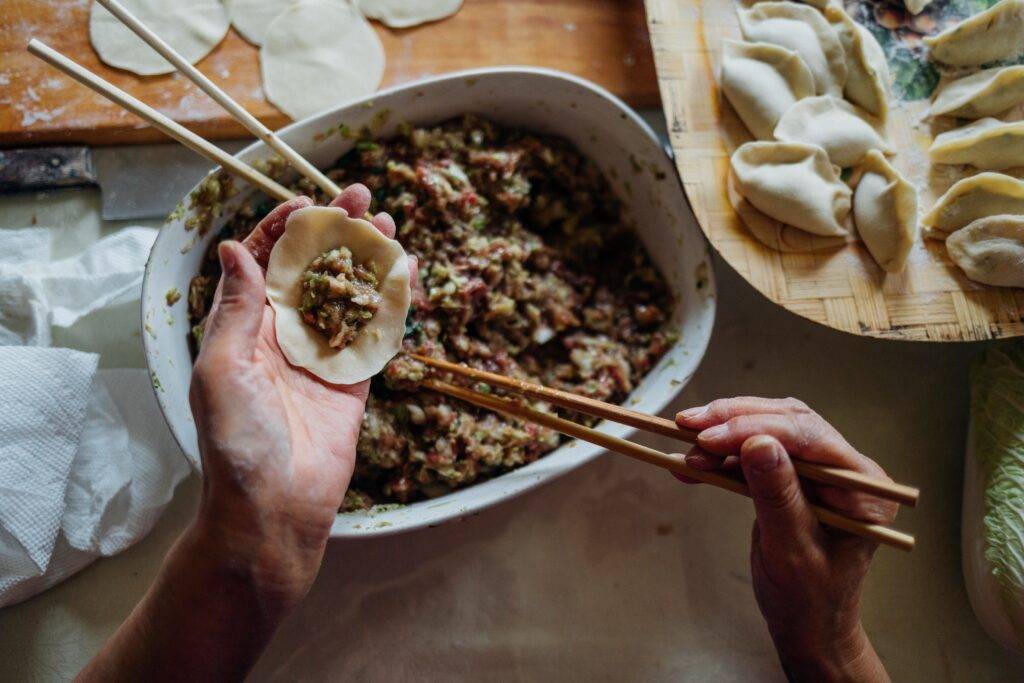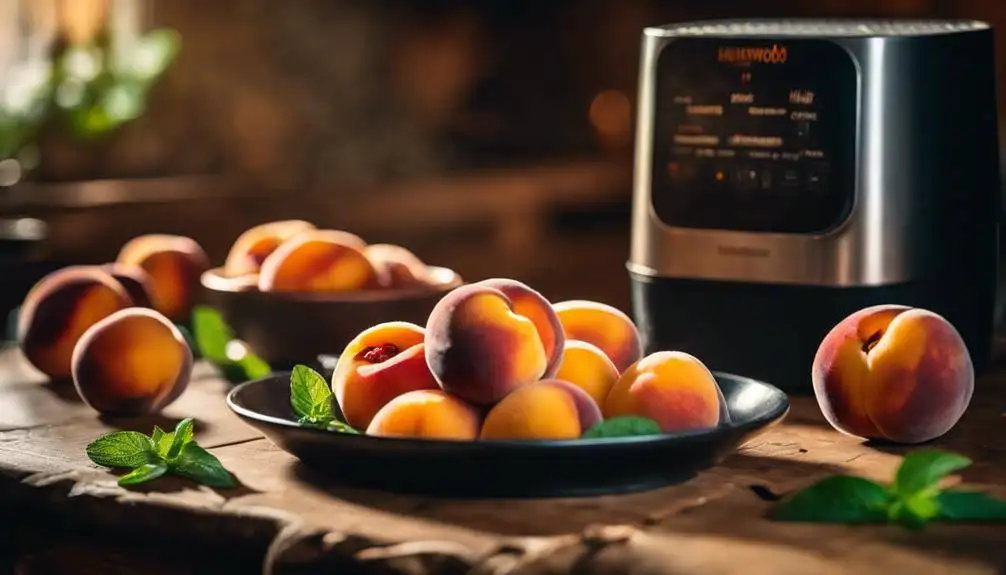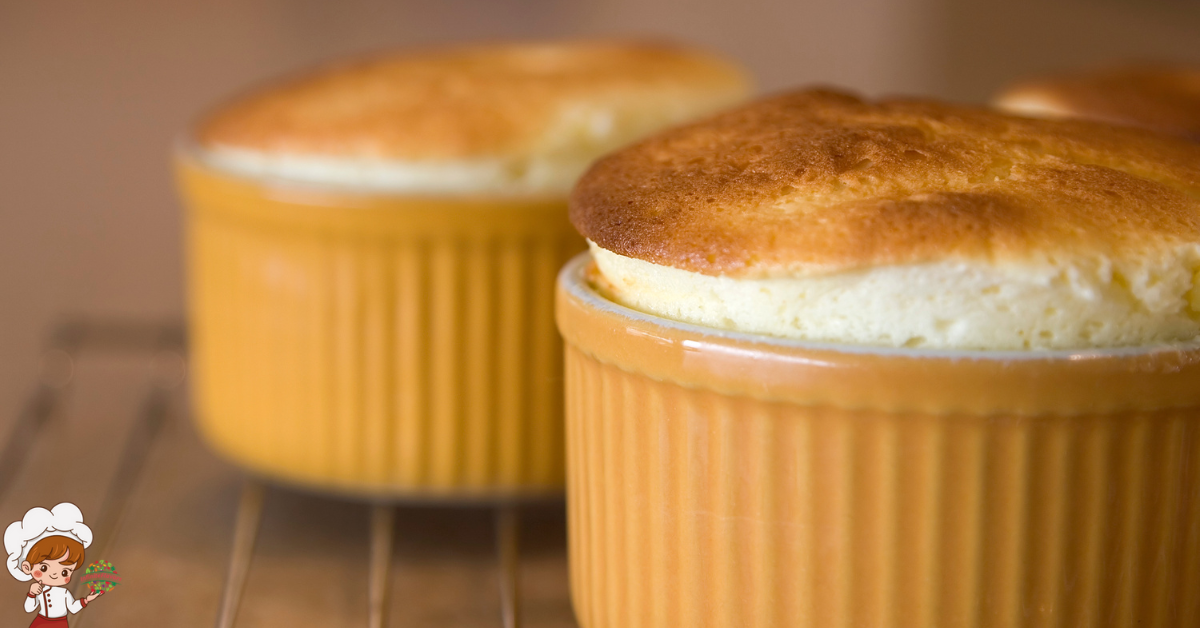Exploring The Best Flavors Of Northern Chinese Cuisine

Are you ready to embark on a culinary adventure? Get ready to explore the flavors of Northern Chinese cuisine, which has a rich history and is known for its diverse range of dishes. Did you know that Northern China is known for its hearty soups, with over 50 different types to choose from? From savory dumplings to mouthwatering braised meat dishes, there is something for everyone to enjoy. Indulge in the crispy pancakes and hand-pulled noodles that will leave you craving for more. Don’t forget to try the refreshing herbal teas and sweet sticky rice cakes to round off your meal. So, put on your adventurous hat, and let’s dive into the flavors of Northern Chinese cuisine!
Rich and Flavorful Soups
Indulge in the richness and depth of flavors found in Northern Chinese cuisine by savoring the delectable array of soups available to you. Northern Chinese soups are known for their hearty broths and use of traditional ingredients that create a harmonious blend of flavors. These soups are not only nourishing but also packed with a range of tastes that will surely satisfy your palate.
One popular soup in Northern Chinese cuisine is the hot and sour soup. This soup is characterized by its thick and tangy broth, which is made by combining vinegar, soy sauce, and chili paste. It is then filled with ingredients such as tofu, mushrooms, bamboo shoots, and shredded pork. The combination of the tangy broth and the savory ingredients creates a symphony of flavors that is both refreshing and satisfying.
Another must-try soup is the egg drop soup. This simple yet delicious soup is made by slowly pouring beaten eggs into a simmering chicken or vegetable broth. The eggs create delicate ribbons as they cook, giving the soup a beautiful texture. The addition of green onions and a dash of sesame oil enhances the flavors and adds a touch of freshness to the soup.
For a heartier option, the beef noodle soup is a perfect choice. This soup features tender chunks of beef simmered in a flavorful broth, along with a generous portion of noodles. Traditional ingredients such as star anise, cinnamon, and ginger infuse the broth with their aromatic flavors, making each spoonful a delight.
Dumplings: Steamed, Fried, and Boiled
To continue exploring the rich and diverse flavors of Northern Chinese cuisine, let’s delve into the world of dumplings: steamed, fried, and boiled. Dumplings are a staple in Northern China and come in various shapes, sizes, and flavors. They are made by wrapping a mixture of ingredients, known as the dumpling filling, in a thin layer of dough called the dumpling wrapper.
When it comes to dumpling fillings, the options are endless. Popular choices include minced pork, shrimp, and vegetables. The fillings are often seasoned with soy sauce, ginger, garlic, and other aromatic spices to enhance the flavors. Each bite of a well-made dumpling provides a burst of deliciousness that is both satisfying and comforting.
Dumpling wrappers are usually made from wheat flour, giving them a soft and chewy texture. The dough is rolled out into thin circles and then filled with the desired ingredients. Steamed dumplings, also known as jiaozi, are cooked by placing them in a steamer basket over boiling water. This method retains the moisture and flavors of the filling, resulting in a tender and juicy dumpling.
Fried dumplings, or guotie, are pan-fried until the bottoms become golden and crispy. This cooking technique adds a delightful crunch to the dumpling while still preserving the moistness of the filling. Boiled dumplings, known as shuijiao, are cooked in boiling water until they float to the surface. The boiling process gives the dumplings a silky smooth texture and a comforting warmth.
Whether steamed, fried, or boiled, dumplings are a beloved dish in Northern Chinese cuisine. They are not only delicious but also versatile, as they can be enjoyed as a snack, appetizer, or even a main course. So next time you’re craving a taste of Northern China, don’t forget to savor the delightful world of dumplings.
Savory Pancakes and Breads
Savor the delectable flavors of Northern Chinese cuisine with savory pancakes and breads. These dishes are a staple in the region and offer a unique and satisfying dining experience. Whether you’re craving a crispy pancake filled with mouthwatering ingredients or a fluffy bread with various flavors, Northern Chinese cuisine has got you covered. Here are two must-try options:
- Pancake fillings: Northern Chinese cuisine is known for its wide variety of pancake fillings that range from savory to sweet. One popular filling is the scallion pancake, which is made by layering thinly sliced scallions between layers of dough and then pan-frying it to perfection. The result is a crispy pancake with a fragrant and flavorful filling. Another delicious option is the pork pancake, which consists of tender and juicy pork that is marinated in a savory sauce and then wrapped in a pancake. The combination of the tender meat and the crispy pancake creates a delightful contrast of textures.
- Bread varieties: Northern Chinese cuisine offers a plethora of bread varieties to satisfy your carb cravings. One standout option is the mantou, a steamed bread that is soft and fluffy on the inside and has a slightly sweet taste. It is often enjoyed as a side dish or used as a bun for sandwiches. Another popular choice is the shaobing, a flaky and layered bread that can be filled with a variety of ingredients such as sesame paste, meat, or vegetables. The shaobing is perfect for a quick and satisfying meal on the go.
With its savory pancake fillings and diverse bread varieties, Northern Chinese cuisine is a treasure trove of flavors waiting to be explored. So, next time you’re in the mood for something delicious and unique, don’t forget to savor the culinary delights of Northern Chinese pancakes and breads.
Noodles: Hand-pulled, Knife-cut, and Belt
Get ready to explore the world of Northern Chinese noodles, where different techniques and regional variations create a diverse and delicious culinary experience. From hand-pulled noodles to knife-cut and belt noodles, each technique offers its own unique texture and flavor. You’ll learn about the art of noodle-making and discover the distinct characteristics of noodles from different parts of Northern China.
Noodle-Making Techniques
You can learn three different noodle-making techniques in Northern Chinese cuisine: hand-pulled, knife-cut, and belt. Each technique offers a unique texture and taste to the noodles, showcasing the rich culinary traditions of the region.
- Hand-pulled noodles: This technique involves stretching and pulling the dough until thin strands are formed. It requires skill and precision to create noodles that are chewy and springy in texture. These noodles are often served in hearty soups or stir-fried dishes.
- Knife-cut noodles: With this technique, the dough is rolled flat and then cut into thin strips using a sharp knife. The resulting noodles are thicker and have a more rustic appearance. They are commonly used in dishes like zhajiangmian (noodles with minced meat sauce).
- Belt noodles: Also known as “dao xiao mian,” this technique involves using a special tool called a noodle belt to shave off thin strips of dough directly into boiling water. The noodles have a delicate and smooth texture, perfect for soaking up sauces and flavors.
These traditional noodle-making techniques showcase the artistry and skill of Northern Chinese cuisine, and they are sure to delight your taste buds.
Regional Noodle Variations
There are three regional variations of noodles in Northern Chinese cuisine: hand-pulled, knife-cut, and belt. Each variation showcases different noodle making techniques and offers a unique dining experience. Hand-pulled noodles are made by stretching the dough with both hands until thin strands are formed.
This technique requires skill and precision, resulting in noodles that are chewy and springy. Knife-cut noodles, on the other hand, are made by rolling out the dough and then cutting it into thin strips using a sharp knife. These noodles have a rustic and uneven appearance, with a slightly rough texture that allows them to absorb sauces well. Lastly, belt noodles are made by twisting and folding the dough repeatedly to create a belt-like shape. They are thick and hearty, perfect for soaking up rich broths and sauces.
Braised and Stewed Meat Dishes
Indulge in the rich and tender flavors of braised and stewed meat dishes, a quintessential part of Northern Chinese cuisine. These dishes are known for their slow-cooking techniques, which result in melt-in-your-mouth textures and deeply infused flavors. Northern Chinese cuisine is renowned for its hearty and robust flavors, and braised and stewed meat dishes perfectly exemplify this culinary tradition.
Here are some popular meat choices for braised and stewed dishes in Northern Chinese cuisine:
- Beef: One of the most common meats used in braised and stewed dishes is beef. The slow cooking process helps to tenderize the meat, making it incredibly juicy and flavorful. Beef stew is often made with cuts like brisket or shank, which have a good amount of connective tissue that breaks down during the cooking process, resulting in a rich and velvety sauce.
- Pork: Another popular choice for braised and stewed dishes is pork. Whether it’s pork belly, shoulder, or ribs, the slow-cooking techniques used in Northern Chinese cuisine help to render the fat and create succulent, fall-off-the-bone meat. The meat becomes incredibly tender and absorbs all the savory flavors of the braising liquid, resulting in a dish that is both comforting and delicious.
When it comes to braised and stewed meat dishes in Northern Chinese cuisine, the key is in the technique. The slow cooking process allows the flavors to meld together and the meat to become incredibly tender. Whether it’s beef or pork, these dishes are a testament to the rich and diverse flavors of Northern Chinese cuisine. So, go ahead and savor the warm and comforting flavors of these braised and stewed meat dishes – you won’t be disappointed.
Fragrant and Spicy Stir-fries
Continuing the exploration of Northern Chinese cuisine, you’ll now discover the aromatic and fiery flavors of fragrant and spicy stir-fries. These dishes are renowned for their bold and vibrant flavors, which are achieved through the skillful combination of fragrant spices and fiery chili peppers.
Fragrant stir-fries are a treat for the senses. The aroma of the spices fills the air, enticing you with their unique blend of fragrances. Common spices used in these stir-fries include ginger, garlic, star anise, and Sichuan peppercorns. These ingredients not only add depth and complexity to the dish but also create a tantalizing aroma that will make your mouth water in anticipation.
The spiciness of these stir-fries is another hallmark of Northern Chinese cuisine. Chili peppers, both fresh and dried, are used liberally to give the dishes their characteristic heat. The level of spiciness can range from mild to extremely hot, depending on your preference. If you enjoy a fiery kick, then you’ll be pleased with the intense heat that these stir-fries offer.
One popular fragrant stir-fry is the Kung Pao chicken. This dish combines tender pieces of chicken with peanuts, dried chili peppers, and a savory sauce for a harmonious blend of flavors. The heat from the chili peppers, combined with the fragrant spices and the richness of the sauce, creates a dish that is both satisfying and addictive.
Spicy stir-fries like Mapo tofu are also a staple of Northern Chinese cuisine. This dish features soft tofu cubes cooked in a spicy sauce made with chili bean paste, Sichuan peppercorns, and minced meat. The numbing sensation from the Sichuan peppercorns, combined with the lingering heat from the chili peppers, makes this dish a true delight for spice lovers.
Crispy and Juicy Peking Duck
Get ready to tantalize your taste buds with the crispy and juicy Peking Duck, a culinary masterpiece from Northern China. Discover the cooking techniques that make this dish truly exceptional, from the meticulous preparation to the expert roasting that results in perfectly crispy skin and succulent meat. And don’t forget to explore the best accompaniments, such as steamed pancakes, scallions, and hoisin sauce, to enhance the flavors and create a truly unforgettable dining experience.
Cooking Techniques for Peking Duck
Master the art of roasting to achieve the perfect balance of crispy skin and juicy meat when cooking Peking Duck. To prepare this iconic dish, you need to follow specific cooking techniques that have been perfected over centuries in Northern China. Here are two key steps to achieve the desired result:
- Properly seasoning the duck: Before roasting, the duck is marinated with a mixture of spices, including ginger, garlic, and Chinese five-spice powder. This helps to infuse the meat with incredible flavor.
- Hanging and drying the duck: After marinating, the duck is left to dry in a cool, well-ventilated area. This step allows the skin to dry out, resulting in a crispy texture when roasted.
Best Accompaniments for Peking Duck
To enhance the experience of enjoying your perfectly roasted Peking Duck, there are a variety of delicious accompaniments that complement the crispy skin and juicy meat. When it comes to pairing wine with Peking Duck, there are a few options that work exceptionally well. A dry and fruity white wine like Riesling or Sauvignon Blanc can help cut through the richness of the duck and enhance its flavors.
For those who prefer red wine, a medium-bodied Pinot Noir or a rich Merlot can be a great choice. As for traditional side dishes, there are a few classics that are commonly served with Peking Duck. Thinly sliced cucumbers, scallions, and hoisin sauce are a must. Additionally, steamed pancakes or mantou (Chinese steamed buns) are often used to wrap the duck and create delicious little parcels of flavor.
Fresh and Tangy Cold Dishes
Discover the vibrant flavors of Northern Chinese cuisine through the refreshing array of fresh and tangy cold dishes. These dishes are perfect for beating the heat during the summer months and are a delightful addition to any meal. Northern Chinese cuisine is known for its bold flavors and unique combinations, and the fresh and tangy cold dishes are no exception.
Here are two must-try options:
- Fresh and Tangy Summer Salads: These salads are bursting with flavors and textures. They are often made with crisp vegetables such as cucumbers, carrots, and radishes, which are thinly sliced or shredded. The vegetables are then tossed in a tangy dressing made with ingredients like vinegar, soy sauce, and sesame oil. The result is a refreshing salad that is both light and satisfying. One popular variation is the “liang ban huang gua,” which is a salad made with cucumbers marinated in a tangy mixture of vinegar, garlic, and chili oil. It’s the perfect dish to cool down on a hot summer day.
- Traditional Pickled Vegetables: Pickled vegetables are a staple in Northern Chinese cuisine. These vegetables are preserved in a brine made with vinegar, salt, and sugar, which gives them a tangy and slightly sweet flavor. The pickling process not only enhances the taste but also helps to preserve the vegetables for longer periods. Popular pickled vegetables include cabbage, radishes, and cucumbers. These pickles are often served as a side dish or used as a condiment to add a tangy kick to other dishes.
Whether you’re looking for a light summer salad or a tangy condiment, the fresh and tangy cold dishes of Northern Chinese cuisine are sure to satisfy your taste buds. Don’t miss the opportunity to try these vibrant flavors and experience the unique culinary traditions of Northern China.
Satisfying Hot Pot Delights
Indulge in the savory delights of hot pot cuisine in Northern China. Hot pot is a popular dining experience that offers a unique and interactive way to enjoy a meal. The concept is simple: a simmering pot of flavorful broth is placed in the center of the table, and you cook your own ingredients right at the table.
The hot pot ingredients are varied and abundant, allowing you to create a personalized culinary experience. Thinly sliced meats such as beef, lamb, and pork are popular choices, as well as seafood like fish and shrimp. Vegetables like mushrooms, leafy greens, and tofu are also commonly added to the pot. These ingredients are cooked in the simmering broth until tender and infused with the rich flavors.
To enhance the taste of the hot pot ingredients, a variety of dipping sauces are provided. These sauces add an extra layer of flavor and can be customized to suit your preferences. Some popular options include soy sauce, sesame oil, garlic, and chili oil. You can mix and match these sauces to create your own unique combination, adding a spicy kick or a hint of sweetness to your dish.
The beauty of hot pot lies in its communal nature. It brings people together, allowing them to bond over a shared meal and create lasting memories. So gather your family and friends, and embark on a culinary adventure through the satisfying hot pot delights of Northern China.
Sweet and Sticky Rice Cakes
As you delve deeper into the culinary delights of Northern Chinese cuisine, prepare to be captivated by the irresistible allure of sweet and sticky rice cakes. These delectable treats, also known as nian gao, hold a special place in the hearts and palates of the Chinese people. Here’s why:
- Traditional Recipes
- The art of making sweet and sticky rice cakes has been passed down through generations, with each family adding its own unique twist to the recipe. The cakes are typically made from glutinous rice flour, water, and sugar, creating a chewy and sweet texture that is simply irresistible.
- Some traditional recipes incorporate additional ingredients such as red bean paste, sesame seeds, or even dried fruits to enhance the flavor and provide a delightful surprise with every bite.
- Cultural Significance
- Sweet and sticky rice cakes hold great cultural significance in Chinese celebrations, particularly during the Lunar New Year. These cakes symbolize good luck, prosperity, and the hope for a sweet year ahead.
- The round shape of the cakes represents unity and harmony, while the stickiness symbolizes family and the binding of loved ones together. It is common for families to gather and share these cakes, strengthening the bonds between relatives and friends.
Whether enjoyed as a dessert or a snack, sweet and sticky rice cakes are a delightful indulgence that showcase the rich culinary heritage of Northern Chinese cuisine. Their traditional recipes and cultural significance make them a must-try treat for anyone exploring the flavors of this region. So go ahead, take a bite and experience the sweetness and stickiness that will leave you yearning for more.
Refreshing Herbal Teas and Drinks
Continuing your exploration of Northern Chinese cuisine, you’ll be delighted by the refreshing herbal teas and drinks that are an integral part of the culinary experience. These beverages not only quench your thirst but also offer healing properties due to their traditional preparation.
One popular herbal tea is chrysanthemum tea, made from dried chrysanthemum flowers. This golden-hued tea has a delicate floral aroma and a slightly sweet taste. It is believed to have cooling properties and is often consumed during hot summer months to alleviate heat-related ailments. Chrysanthemum tea is also known to improve eyesight and promote relaxation.
Another herbal drink that you must try is ginger tea. Made from fresh ginger root, this tea has a spicy and invigorating flavor. It is often consumed to warm the body during colder months and is believed to aid digestion and boost the immune system. Ginger tea is also known for its anti-inflammatory properties, making it a popular choice for soothing sore throats and easing cold symptoms.
For a more unique experience, try the goji berry tea. These small, red berries are known for their high antioxidant content and are often brewed into a fragrant tea. Goji berry tea is believed to improve overall health and vitality and is often consumed to boost the immune system and promote longevity.
Conclusion: Northern Chinese Cuisine
In conclusion, exploring the flavors of northern Chinese cuisine is a journey filled with rich and flavorful soups, delectable dumplings in various cooking styles, savory pancakes and breads, hand-pulled and knife-cut noodles, braised and stewed meat dishes, fresh and tangy cold dishes, satisfying hot pot delights, sweet and sticky rice cakes, and refreshing herbal teas and drinks. Each dish offers a unique blend of ingredients and techniques that will leave your taste buds craving for more. So dive into this culinary adventure and discover the deliciousness of northern Chinese cuisine.








